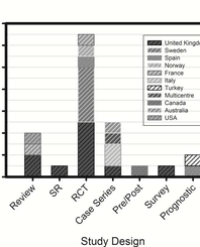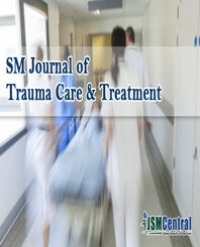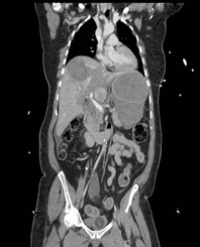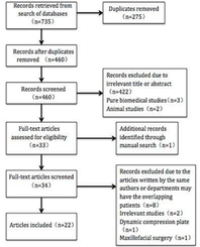
Rehabilitation of Proximal Humerus Fractures- A Scoping Review
Purpose: This scoping review maps the breadth of rehabilitation literature with specific relevance to the non-surgical management of proximal humerus fractures (PHF) in order to make recommendations for current practice and future research.
Methods: We searched 8 electronic data bases to July 16, 2015 for eligible studies; targeted citation tracking and hand-searches were continued thereafter. Eligibility screening and data charting were conducted in duplicate. Data extraction included publication details, objective, participant characteristics, interventions (and comparator if applicable), outcome measures, and authors’ main conclusions. Data were catalogued according to research focus and outcomes assessed.
Results: The search yielded 1599 articles for full-text review; 26 articles (describing 22 unique primary studies and 5 knowledge translation studies) were eligible for inclusion. Dates of publication range from 1979 to 2017. The majority of the studies (88.5%) were conducted in Europe. Half were randomized controlled studies (RCTs). Typically, participants were older women. Research foci included: PT practice patterns in PHF rehabilitation (n=1), effectiveness of a specific PT element (n=3), timing (n=8), methods of delivery (n=3), nonsurgical versus surgical management (n=7), and knowledge translation to guide clinical practice (n=5). Few studies provided complete descriptions of both the fracture characteristics and the main elements in the PHF rehabilitation therapy interventions.
Conclusions: Current ‘good practice’ in PHF rehabilitation is informed by this literature however no definitive evidence-based protocols exist. Using this scoping review technique driven by knowledge users, next steps have been identified such as developing summary sheets for rehabilitation team members and patients with PHF to address options and expectations regarding treatments and outcomes. High quality prospective studies, both prognostic and RCTs, are needed to investigate the effectiveness of key elements of rehabilitation therapy in patient groups with various types of PHF classified according to risk for poor functional outcome.
Norma J MacIntyre1*, Lowell L Kwan1 , Herman Johal2 , Kelly A Lefaivre3 , Pierre Guy3 , Sheila Sprague4 , Mohit Bhandari4, Taryn Scott5 , Peter A Cripton6 , Michael D McKee7 and Gerard Slobogean8



